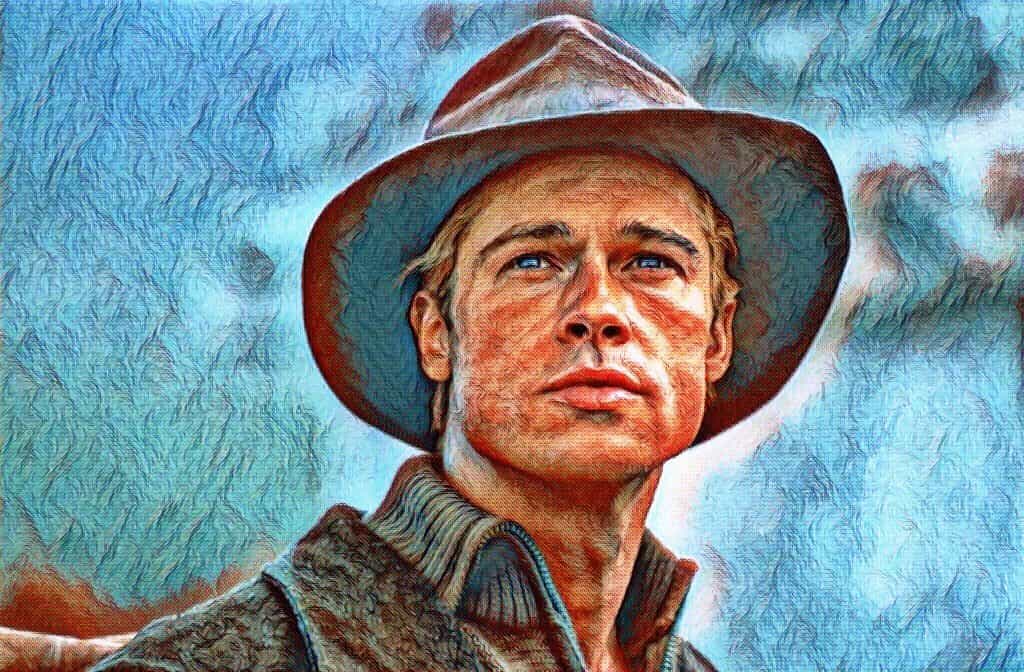
The Brad Pitt Chronicles: Blockbusters, Breakups & Beyond
What does someone receive when fate sweeps a young adult from Missouri and breathes life and says, “$15 you’re going to earn off of adult humans to see your face in darkened cinemas”? A man by the name of William Bradley Pitt, whose mere presence has accumulated $93 billion in worldwide box office sales. Not a typo. We are discussing Luxembourg’s GDP simply because the species in aggregate decided that the example of man deserved our undivided attention.
And never mind the statistical improbable: one kid, born Dec. 18, 1963, in Shawnee, Okla., grew up in the supposed “‘Mark Twain country, Jesse James country'” of Springfield, Mo., where entertainment edgework involves sitting and staring at a spot of corn long enough until you can swear you see it grow. His daddy owned a trucking firm, his mommy dispensed high school counsel, and teenage Brad just possibly was the sole golf team member hatching ill-gotten Hollywood schemes. Because, naturally, if you live in “a lot of hills, a lot of lakes”, then world-movieland superstardom simply has to be the career of choice.
And then there’s the dark joke the universe played. This wasn’t mere fame by accident—some incidental lick from the stars. No, he purposefully mapped out his rise, starting at the financially smartest place in movie-making: thirty seconds of bare-chested screen time in Thelma & Louise (1991). One stylishly frayed cowboy hat, one strategically smiled smile, and American women had themselves a new cultural habit. ROI? Through the roof.
And then came what can be called a concerted attack on the entertainment industry. A River Runs Through It made him a pin-up of the contemplative woman. Legends of the Fall demonstrated he could brood on screen for ages. Interview with the Vampire presaged he would play the otherworldly, still bound to his otherworldly cheekbones. Then came Seven, which demonstrated he could play mental obscurity, then Fight Club—where he declared of The first rule of Fight Club is that you do not talk about Fight Club and looked as if he were a marble statue man who, in some inexplicable way, suffered from insomnia and a set of impeccable abs.
Why worry about the acting, though, when you’re already redefining mankind’s accomplishments? Pitt started Plan B Entertainment in 2001, because of course, looking otherworldingly handsome and getting critical acclaim wasn’t enough to scare him. The actor who once showed up as mythic warriors and blood-sucking vampires had an uncanny ability to recognize Oscar-bait projects. He won an Academy Award for Best Picture for 12 Years a Slave—because having film superstardom, production, and charitable endeavor all at once appeared to leave him idle time.
And speaking of Oscars, Pitt finally secured the first Academy Award for acting in his career in 2019 for Once Upon a Time in Hollywood in which he portrayed a stuntman so naturally and effortlessly that you would swear he stepped out of the womb in vintage style aviators and tooling around LA in vintage Mustangs.
And the cultural phenomenon of his private life—twice (in 1995 and 2000, just to keep things interesting for our history buffs) People magazine called him Sexiest Man Alive. His romantic life had enough drama to sustain the journalism economy of a small country. Jennifer Aniston, Angelina Jolie, six kids, and enough paparazzi shots to build the Hollywood sign out of magazine cutouts.
And so much of the rest of this empire started as this one Missouri kid who thought movies were “a portal into other worlds” and had the nerve—or perhaps the imagination—to leave college two weeks short of graduation in search of that portal. He transferred urban ambitions to Hollywood, took courses in acting and worked hotel and restaurant shifts, and learned from Gary Oldman’s and Sean Penn’s and Mickey Rourke’s styles.
From the golf squad at Kickapoo High School to A-list Hollywood celebrities—a career path which would highly and completely confound any career advisor charting standard career trajectories. Occasionally, however, fate doesn’t just tap, but kicks the door open, rearranges the chairs, and discovers a out-of-work movie star.
When Talent Meets Opportunity: A Career Study

The Making of a Hollywood Icon: Early Career Stumbles (1987-1993)
Always wondered what it feels to be dashing to the extreme of devastatingly so and completely in the dark about your future stardom? Then ask Brad Pitt in 1987, wide-eyed and likely to be thinking that Los Angeles has been his greatest blunder or destiny.
His screen career started in the types of performances any would-be thespian can identify with—no-credits-whatssoever type performances in which one leans forward in one’s seat in confusion and says, “Wait, was that.?” The blink-and-you’ll-miss-him types of performances in No Way Out, No Man’s Land, and Less than Zero were Where’s Waldo in Hollywood, but Waldo looked devastatingly handsome and completely unaware of the situation.
May 1987 saw his debut on NBC daytime soap Another World—two entire episodes! Somewhere, his mom was taping sad VHS copies and speed-dialing relatives within a radius of fifty miles. By November, he was guesting on Trial and Error and Growing Pains, because apparently even fictional families needed a dash of Pitt magic injected into their lives.
The soap gods smiled a second time when he contracted for a run of four episodes on Dallas as Randy. Four episodes! That is practically the same as being married in soap parlance. And in the meantime, he was on 21 Jump Street, which could not resist him, not even Johnny Depp’s show.
Then arrived the agony of the cruel fate. The Dark Side of the Sunmaterialized in 1988 as what would be his first starring role as an actor. Young Brad must have thought to himself, “I’m going to be a Hollywood film star!” Little did he realize that the Croatian War had different plans and shelved the film quicker than a book club book. It resurfaced in 1997—delayed gratification in Hollywood’s ugliest form.
Future A-listers, though, don’t quit. He starred in Happy Together and Cutting Class that same year of 1989—his first movie to, you know, reach theaters. There must have been a publicist out there somewhere doing evangelical cartwheels.
Sandwiched between guest shots on Head of the Class, Freddy’s Nightmares, and Thirtysomething, Pitt was the go-to guy for “Hey, isn’t that the guy from.” 1990 saw him in Too Young to Die?, as sneaky drug user Billy Canton. Entertainment Weekly’s Ken Tucker described him as a “magnificent slimeball” and a “malevolent John Cougar Mellencamp type.” What better career milestone to be than a sinisterly evil incarnation of a heartland rocker?
More television appearances and a spot in a Levi’s advertisement—because even pant makers knew he had sales potential—followed, and then came 1991 and the role that would be the dynamite to his career: J.D. in Ridley Scott’s Thelma & Louise. Bitter irony: after all of those lean years of struggling in minor roles, it was playing in a minor role that catapulted him to the stratosphere. His love scene with Geena Davis didn’t quite make him just a sex symbol; it likely induced a national shortage of smelling salts.
Hollywood success never happens in a straight line. Johnny Suede and Cool World followed in which Olson received bad notices and weak box office—Hollywood’s way of saying, “Don’t get too comfortable, dear.”
Then Robert Redford called in 1992 with A River Runs Through It, introducing him to Paul Maclean. That’s where it gets irresistibly meta: Pitt felt bad and thought it to be his worst film, but it attracted the maximum amount of attention to him. Your worst work day is your best triumph at times—over-achiever’s penalty by the universe.
He credits playing with Redford to having upped his game, comparing playing tennis against a stronger player. Humble words from one quickly becoming everyone’s tennis play partner of choice.
1993 saw him back alongside Juliette Lewis in Kalifornia, as serial killer Early Grayce. Peter Travers of Rolling Stone described him thus: “outstanding, all boyish charm and then a snort that radiates pure menace.” Range, anyone? He was also in True Romance as stoner Floyd, which gave a generation of couch potatoes a goal to shoot for. It culminated at year’s end in a ShoWest Award for Male Star of Tomorrow. Struggling, cameos, stalled movies were completed after six long years. Tomorrow had finally come, and what a great tomorrow it would prove to be.
Breakthrough Roles: From Vampire Flop to Golden Globe Glory (1994-1998)
It’s 1994, and Hollywood hands Pitt some fangs and says, “Go bite Tom Cruise’s neck.” And what happens? Interview with the Vampire, in which he portrayed Louis de Pointe du Lac opposite Tom Cruise, Kirsten Dunst, Christian Slater, and Antonio Banderas. You’d expect tortured vampire to be right in his wheelhouse, but apparently, eternal damnation wasn’t quite his thing. While he won two MTV Movie Awards (because what better way to be respectfully thought of as an actor than to hold golden popcorn statues?), the critics weren’t quite swooning. The Dallas Observer gave him a nasty review, essentially saying that Pitt was wonderful at cockiness and down-home charm, but when he had to do “inner torment”—well, his Louis needed a little practice to cover several centuries.
But where our golden-maned hero demonstrates he’s more than vampire brooding is in Legends of the Fall (1994), where he played Tristan Ludlow—frontier drama and Montana blowy winds, anyone? It’s Jim Harrison’s novel and set against the towering American West and, of course, Anthony Hopkins played the Colonel William Ludlow role, because, well, every ’90s drama needed that heft. This time, the critics nearly passed out. The New York Times’ Janet Maslin wrote of him possessing a “diffident mix of acting and attitude” that simply clicked. The complaint? The film’s superficiality couldn’t match his star power.
Then came, in 1995, the movie that would have audiences reconsider cardboard boxes in much the same way after that. Se7en paired Pitt with Morgan Freeman, Gwyneth Paltrow, and Kevin Spacey in a dark enough crime thriller to make vampire movies as sunny and happy as they are as Disney films. In playing Detective Mills, pursuing a man so fixated on the seven deadly sins, he later outgrew the “pretty boy” role. The bet paid off big time. Variety called it “screen acting at its best,” writing of his “resolved, energetic, credible job.” Se7en took $327 million at the world box office—not bad when you’re out to show you can do something other than be appallingly handsome.
Within hours, he was hired by Terry Gilliam to play the role of psychotic anarchist Jeffrey Goines in 12 Monkeys. Overnight, everyone knew this huge talent had depth. Janet Maslin described his performance as “startlingly frenzied” and wrote that he “electrifies Jeffrey with weird magnetism.” Payoff: A Golden Globe Award for Best Supporting Actor and his first Academy Award nomination. Not bad for a guy critics once announced couldn’t cope with inner turmoil.
He returned later in Sleepers (1996) and The Devil’s Own (1997), when he tried an Irish brogue with less-than-mixed results. The critics divided down the middle—some were perplexed at his brogue because it was “too convincing,” but other critics seemed downright eager to critique the accent rather than the film. However, the film grossed $140 million overseas, and you had to admit that, for all dubious Irish, there just wasn’t avoiding an undeniable star power.
Seven Years in Tibet followed later in the year, and Pitt got in touch with his inner mountain goat, training for months in rock climbing in California and in the European Alps. To play mountaineer Heinrich Harrer of Austria, he showed he’d climb mountains literally for the part—what method actor commitment.
It concluded on Meet Joe Black, which came out in 1998 and had him play Death itself discovering what humans were all about. The critics were split (Roger Ebert called it “a miscalculation”), and you have to applaud anyone reaching that high. How many major male stars can say they’ve played vampire and Grim Reaper? What was remarkable during this period of exploration wasn’t bulk of diverse performance, but the manner through which he methodically abandoned every supposition of what he could and could not accomplish. From goth horrors to epics’ tent-poles, crime dramas to intelligent fantasies, he amassed a résumé shouting versatility. Even when his Irish brogue sometimes growled befuddlement, his transformation from new kid-in-town to trusted screen presence could not be ignored. The modern-day Brad Pitt? This four-year span mapped that ground, one bold performance at a time.
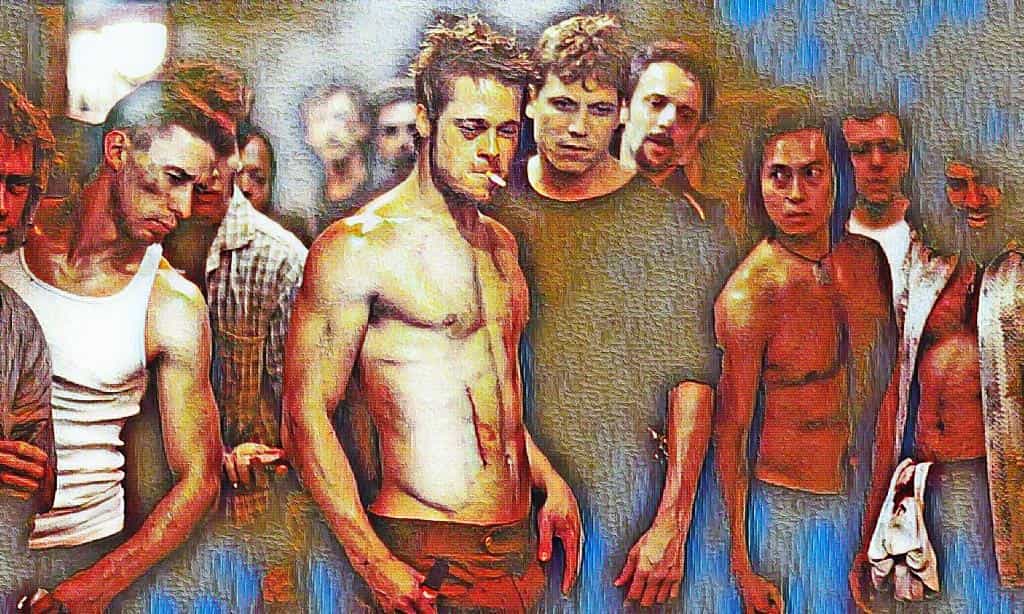
The Rise of Brad Pitt: Fight Club Teeth to Ocean’s Millions (1999-2003)
Just imagine yourself in this position: This is 1999, and Brad Pitt is literally asking strangers to chip off fragments of his perfectly shaped front teeth. Why? Because David Fincher calls up and says “I want you to become Tyler Durden,” and it appears the only logical response is “How many teeth do you want me to sacrifice for the sake of art?”
And that’s how the greatest unbridled stretch of Pitt’s career perhaps began—one in which he realized, hey, maybe he’d had enough of being everyone’s pretty boy and it was time to begin throwing punches. Literally.
It wasn’t a film, but Pitt’s personal war manifesto against typecasting. Here was the golden boy of Tinseltown learning to box, learning to do taekwondo, learning to wrestle—basically relinquishing the human equivalent of the Swiss Army knife as they also became the philosophy professor to the lost souls of planet Earth. When it came to the film itself, critics disagreed (apparently, there are those who do not love greatness in the face, cinematographically), but the acting of Pitt? Universal praise.
CNN’s Paul Clinton nearly back-flipped in admiration for the film’s “risky but successful nature,” and Variety went starry-eyed that Pitt was “cool, charismatic and more physically dynamic” than ever. Even when the box office was a flop initially, Fight Club laughed last—becoming the cult favorite that likely has more dedicated followers than many actual cults.
Hold on, there’s more! Not satisfied with merely one accent-switching, physically demanding role, Pitt merely shifted into another gear to portray an Irish Traveller boxer in the Guy Ritchie film “Snatch.” By Irish, I mean so completely un-intelligible that even native Irish speakers had to wear subtitles like a badge of honor. He must have stood in front of his career and declared, “You know what I need? For everyone to be wondering whether I’ve lost my grasp of the idea of language.”
The San Francisco Chronicle’s Mick LaSalle had the audacity to suggest that once Pitt had been “shackled by roles that required brooding introspection.” Shackled! As if it was in any way restrictive to be bowled over by the man’s cripplingly handsome face as he gazes into the abyss of existence. But LaSalle wasn’t entirely wrong-the actor had indeed made his home in “black comic outrageousness and flashy extroversion.” Who’d have believed that the secret to his happiness was to simply let him be utterly, unreservedly weird?
Talking about strange, let’s take a look at his career choices. So, deciding he could be a confusing Irish boxer, Pitt figured he’d knock Julia Roberts’ socks off with an affair of the heart in “The Mexican”—a picture that somehow managed to get middling reviews while making money. It’s like the movie version of a questionable style fad that, for some unknown reason, actually works.
Along came “Spy Game,” in which he starred opposite Robert Redford in a de facto $143 million master class in seeming cool while talking about top-secret business. Yeah, a few reviewers called it lacking in the area of “emotional connection,” but seriously, it’s Brad Pitt and Robert Redford in the same scene, so please, is there too much of a good thing here?
And maybe the most delicious moment of the decade came when he made a guest appearance on “Friends” as a bad guy who had it out for Rachel Green—a.k.a. his real-life wife, Jennifer Aniston. Popping up at your wife’s workplace to basically skewer her character? That’s not method acting, baby—that’s method marriage. And it worked—scored him an Emmy nomination.
The cherry atop this large career sundae was “Ocean’s Eleven,” in which Pitt got to sit back with George Clooney, Matt Damon, and Julia Roberts and plot grand heists. It grossed $450 million in the worldwide boxoffice, the smartest career choice sometimes just to be around others as beautiful and gifted and just stand back and let magic unfold.
And because our leads leider could never turn down an artistic challenge, he topped off the decade by running through the streets of L.A. in a gorilla costume on MTV’s “Jackass” and providing voice work on cartoons. Since there’s nothing that indicates better acting prowess than providing that voice on Boomhauer’s brother on the excellent drama series, “King of the Hill.”
What’s great about this time is more the awestruck praise—that it’s even possible—than the unadorned taking on of opportunism, the willingness to accept absurdity, and the seeming realization that survival of career could indeed be tied to never getting everyone used to who they expect him to be. Frequently the greatest transformation is as much less of a matter of redescribing yourself as it is finding the courage to have the world see what you are, once and for all.

How Brad Pitt Became the World’s Favorite Leading Man (2004-2008)
How does one react when the world’s most bankable face suddenly commits four years of his career to establishing he’s more than eye candy to gaze upon? From 2004 to 2008, Brad Pitt took on what can only be called a masterclass in chameleon-work in film—all of it changing from ancient Greek soldiers to reverse-aging enigmas with the same sense of nonchalance of someone never to have heard the phrase “sit in your lane.”
He began working for Troy in 2004, where he rehearsed sword choreography for six months but injured his actual-life Achilles tendon during shooting. What more ironic comment on the humor of life is there? Here’s the man to portray the biggest of the world’s warriors in books, to fall prey to the very same vulnerability that was the on-screen persona of his character. Stephen Hunter of The Washington Post described it as a commanding performance by Pitt, but there cannot be the slightest doubt that even Homer must have enjoyed the vicissitude of fate in this moment.
It capped off not just another blockbuster performance—it launched Plan B Entertainment, the production outfit Pitt started with his erstwhile wife, Jennifer Aniston, and producer Brad Grey. What more solidly advances sincere artistic aspirations than to christen your initial film after a decade-long siege? The box-office verdict pronounced that the public was in a disposition to accept Pitt as serious actor, but also as smart producer with the capacity to bring epic tales to broad public consciousness.
Ocean’s Twelve, that December, again cast Pitt with the inestimably charismatic George Clooney in what CNN’s Paul Clinton has called “the best male chemistry since Paul Newman and Robert Redford.” Seeing their easy repartee was like attending a master class in the grand high art of pulling off high-stakes thievery as second nature. At the foreign box office, the movie earned $362 million, the best acting of all perhaps in making us believe the impossible is possible. Rusty Ryan, the character played by Pitt, was a held-chaos master class—a safe-busting, one-liner-busting type of guy who could do it all with such aplomb.
Then came 2005’s Mr. & Mrs. Smith, and the entertainment universe was upended. What began as a dark comedy tale of married assassins became the romantic angle that would dominate headlines for years to come. The Star Tribune said that despite having an “haphazard” plot, the movie succeeded through “gregarious charm, galloping energy, and the stars’ thermonuclear screen chemistry.” That adjective—thermonuclear—proved to be clairvoyant because Pitt’s real-life romance with Angelina Jolie exploded across tabloids worldwide. The film’s $478 million global box office helped make it one of the highest-grossing movies of 2005, proving that people couldn’t resist viewing pretty people try to kill one another in increasingly creative ways.
But it was here that Pitt started flexing his more significant artistic muscles. Babel (2006) reunited him with Cate Blanchett in Alejandro González Iñárritu’s multiple-narrative drama. Pitt’s believeliable performance won praise from the Seattle Post-Intelligencer, with commentary on the way his box office appeal had added the film’s profile. Decades later, Pitt would refer to this role as one of the brightest moments of his life—a ringing endorsement from the director whose career had been constructed on well-researched risk-taking. The film’s trajectory from Cannes sensation to Oscar contender played out over seven Oscar nominations, with Babel winning the Golden Globe for Best Drama and picking up Pitt’s Best Supporting Actor nomination.
Meanwhile, his Plan B Entertainment released The Departed, the Best Picture Oscar winner. Pitt was even listed as a producer, although only Graham King faced Oscar scrutiny—a tip of the hat to the fact that Hollywood’s politics are sometimes as tricky as its most convoluted storylines. Sometimes the best work occurs backstage, even if it never adds up to statues of gold.
Ocean’s Thirteen’s turn came in 2007, ending the trilogy at a modest $311 million foreign boxoffice gross. Less profitable, maybe, but watching Pitt’s Rusty Ryan master the delicate process of chomping on the run had been performance art of a kind. Who had ever imagined that filming the act of mastication possessed so subtle a nuance?
The tour de force, however, was in The Assassination of Jesse James by the Coward Robert Ford (2007). Directed by Andrew Dominik for Plan B Entertainment, based on the novel by Ron Hansen, with Pitt as the great outlaw with a “scary and charismatic” stage presence, according to Film Journal International’s Lewis Beale. He took home the Volpi Cup for Best Actor for it in the Venice International Film Festival. Up to the writing of this article in 2019, this remained his personal favorite among his film credits—perhaps because there’s beauty in the meta aspect of seeing an actor whose own legend continues to grow portray a dangerous man whose legend eclipsed his mortality.
The Coen Brothers knocked on the door in 2008 with Burn After Reading, Pitt’s first collaboration with the offbeat directing duo. It was characterized by the Guardian as “a tightly wound, slickly plotted spy comedy” and cited Pitt’s performance as one of the film’s funniest attributes. To see him as a stumbling member of staff of a gym was like finding a comedic treasure in the basement that you never knew you had—astonishing, charming, and sweet in age.
And, last but by no means least, David Fincher’s 2008 screen version of F. Scott Fitzgerald’s 1921 short story, The Curious Case of Benjamin Button. Acting in reverse as a man is hardly method acting fodder—how do you prepare for that? Michael Sragow of the Baltimore Sun, however, wrote up Pitt’s “sensitive” performance as the center of a “timeless masterpiece.” He earned his first Screen Actors Guild nomination for the role, and his fourth Golden Globe and second Oscar nomination. Thirteen Oscar noms followed for the film, as did $329 million in world boxoffice grosses. So what to make of this remarkable four-year run? Here was an actor who could play barbarian warriors, cons of the present era, dirty outlaws, bulbs of the lowest gym rat kind, and time travelers with complete believability. Pundits sang his praises for versatility, fans came in record numbers, and award committees could do no better than to praise him with their honors. No surprise, maybe, that the secret to Pitt’s enduring popularity is not just his unavoidable charisma, but that he’s also willing to go the distance with each of the roles’ respective absurdities. In an age today where the rest of us are struggling just to age with grace, there is something reassuring in witnessing someone reverse-aging. Isn’t the very best form of stardom the kind that makes the impossible, not just believable, but unstoppable?
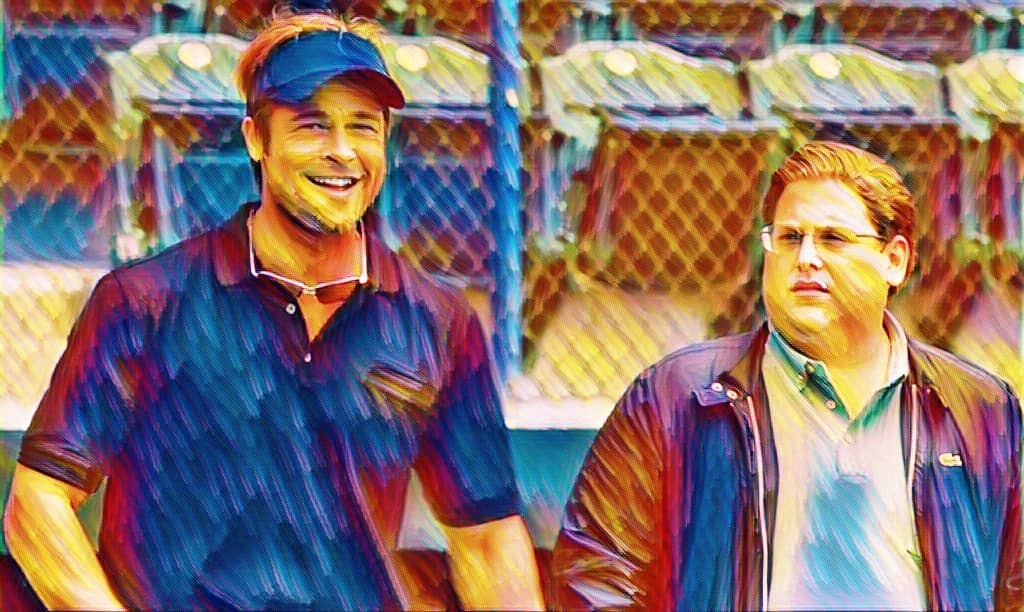
Brad Pitt’s Billion-Dollar Decade: From Cannes Winner to Box Office Gold (2009-present)
Hollywood’s golden boy of the glass-slicing jaw made a decision late in 2009 that cute wasn’t going to be enough anymore. He needed to do something. Real do something. Not stand around looking absolutely heartbreaking with whatever happened to erupt behind him—our boy Brad had big things in store for himself above his gene pool payoff deal.
Until Inglourious Basterds, the weed-haymare of Quentin Tarantino, in which Pitt stars as Lieutenant Aldo Raine, the swarthy-faced swastika-burning drawling American with a drawl thick enough to put on crackers. And to see him trudge his way through itchy-hair scenes with that signature charm is to raise an existential question: Is the man not able to make anything appear hip? Even revenge genocide apparently appears hip in front of those piercing eyes of his? Inglour!ous Basterds took in $311 million, and that’s the proof that there’s money to be made to see the good Brad engrave swastikas on foreheads with the casual relish of a man carving jack-o’-lanterns. Whoever made the decision that war atrocity could look so darn hip?
Wait, there’s more! In a seemingly random oh-so-appealing aside, our hero provides the voice of Megamind as Metro Man. Nothing, of course, screams “deep actor’s make-over” like providing one’s voice as an action hero in a children’s movie. It’s like watching Shakespeare going off on his own to pen fortune cookies—random, but by God, it’s just the thing, it appears. Range on the man was headed for being as compelling as adding-a-smack-of-food-down-you on screen like haute cuisine.
And then came 2011 and Moneyball, and presto, Pitt was going on about stats analysis in the same manner he’d once held for analyzing sunsets. As Oakland Athletics general manager Billy Beane, the man who changed the game of baseball with spreadsheets (and yes, spreadsheets were box office boffo), he got one thing absolutely right: intellectual angst. The Academy noticed and nominated him for an Oscar for nearly single-handedly rendering math hip. Only Brad could make “on-base percentage” into verse that would reduce accountants to tears of happiness.
You couldn’t help but be amazed at the temerity. He’s the kind of guy who based his career on stunningly handsome, one-sided, unrivaled, and it turns out we’d be shaken to have him read off numbers. Getting your fashion model buddy to also be an economics Nobel laureate—pure depth that challenges everything you believed you knew about handsome and smart.
His WWII obsession persisted with Fury in 2014 with invariably Pitt and battling the Nazis pairing as much as peanut butter and jelly. He reprised playing Don “Wardaddy” Collier, a tank commander navigating the psychological minefield of war by the seat of his pants. Fury raked in $211 million in its wake, i.e., folks enjoyed it when he operated big machinery and wondered about the presence of evil by the seat of their pants. There is something irretrievably American about finding therapeutic entertainment in seeing pretty people wreck stuff thoughtfully. At the same time, his producing ability exploded like a rich, manicured orchard of A-flicks that for whatever bizarre reason always flowered as award prospects. 12 Years a Slave won him an Oscar as Best Picture producer, and in The Big Short, he elucidated the 2008 financial collapse to those who believed economics occurred to others. How was he able to continue selecting moneymakers, statement-makers of films? perhaps the same instinct that could make tank warfare look like performance art?
Allied (2016) returned him to Nazi country—the guy seemingly had a thing for baddies of history where—this time as lovesick-but-lethal assassin to Marion Cotillard’s French spy. The movie asked whether or not love might survive deception, and this was dangerously meta for an actor whose whole career had been fictional pretend on an enormous scale. Critics complained about the credibility of the plot as Pitt went full-tilt for the emotional ride with the zeal of a man who genuinely thought the merchandise he was peddling was real, even when said merchandise was your run-of-the-mill by-the-numbers spy romance that took itself exceedingly, exceedingly seriously.
It’s wonderful to see that guy grow from the man who could once get away with anything to the man who had everything seem good by finally achieving it. In Moneyball, he wasn’t merely acting Billy Beane but embodying the struggle of the rational and the sentimental like a man who’d lost sleep worrying about whether statistics could ever encompass the human heart. In Fury, leadership wasn’t merely bellowed orders—but the heaviness of staying alive by the split-second choices on which surviving generally depended as much as the morality-twisting that had you awake at 3 AM.
This wasn’t the moment, in-one-of-those-sappy-Hollywood-transformation-montage kind of thing, but slow, like seeing a person by increments learn to juggle on a unicycle in a gentle breeze of wind. You’d wake up in the morning to discover they weren’t only gripping the grip but beaming with the nonchalance of it not being such a big deal, even when you yourself suspected it wasn’t.
Why were there artists who pushed beyond boundaries and others who turned into statues in costly finery? Was it perhaps willingness to risk being foolish, to perform roles that stretched rather than itemized recognized talent? His Second World War trilogy demonstrated that reuse of material could add depth of understanding rather than encourage sameness, such as the chef still refining the same dish in the hope of something new emerging. This era cemented him as bankable star and legitimate performer—confirmation that commercial possibility and aesthetic credibility weren’t either/or in the promise that done with finesse and genuine enthusiasm. And, you know, marvelous cheekbones didn’t come amiss once you were trying to convince everyone that you were more than just a face with marvelous timing and better reputation.

The Philanthropist Who Builds Houses and the Activist Who Builds Hope
You’re Brad Pitt in 2004, just off your biggest blockbuster film. What’s on the agenda? Vegas? Another motorcycle? Not exactly. You go to Missouri to rally students on college campuses for politics. Now nothing exudes Tinseltown glamour quite like college politics in Flyover Country, does it?
All the rest of the actors spend their vouchers and disappear into their chateaus. But Pitt? He must have gazed upon his fortunate existence and thought to himself, “This demands more richness.” And, man, did he ever deliver that personal brief.
Just consider his spontaneous switch to a cause in the debate on stem cells. In October 2004 stumping for presidential candidate John Kerry, Pitt lobbied for funding of embryonic stem-cell research with unprecedented zeal. “We must make sure that we open these doors so our best and brightest can go out there and discover these cures,” he declared. The rest of us play doctor on the screen and take credit for it as acting. Pitt is a real-life medical-research activist. Is this method acting being carried to the extreme philosophical level?
And that’s his building obsession—a midlife crisis with high ideals. While others purchase sports cars, Pitt studied computer-aided design in the offices of Frank Gehry in Los Angeles. What sets one to look back on one’s successful Hollywood existence and remark, “That’s nice, but sustainable building techniques—now that’s where it’s at”? He even penned a source book on the Blacker House in the year 2000, so dedicated was he to going beyond celebrity fantasy.
Hurricane Katrina supplied the final plot twist with his Make It Right Foundation. Walking through devastated Ninth Ward in New Orleans, Pitt concluded that the situation required more than star donation checks—it required a whole housing revolution. He brought together 13 architectural design firms, in partnership with Global Green USA, and investing $5 million of his own funds to build 150 sustainable, affordable homes. When giving is on the list, Pitt is a one-man planning committee on the urbanscape.
The foundation’s presence stretched so far that in 2009, Pitt joined meetings with House Speaker Nancy Pelosi and with President Barack Obama to negotiate federal money to finance green housing construction projects. One can only guess at the exchange: “So, in the time gap from ‘Fight Club’ to ‘Ocean’s Eleven,’ precisely, how did you just so happen to discover sustainable urban planning?” He actually followed his trajectory to the Oval Office.
Meanwhile, his work with Angelina Jolie established what was, in effect, a charitable empire. Their Jolie-Pitt Foundation, established in 2006, operated well beyond the sphere of celebrity charitable giving. They invested $8.5 million upfront and donated $2.4 million in the first year. In 2007, they were donating $3.4 million per annum. These were no token gestures—they had a genuine humanitarian operation that would stun established NGOs.
Their roster of charitable contributions is like a world contingency plan check list: $1 million each to Doctors Without Borders and Global Action for Children, $100,000 to the Daniel Pearl Foundation, $1 million to the Pakistani victims of Taliban repression, a million to Haiti earthquake survivors. They tackled world issues with disciplined routine most others except for weekly supermarket runs. Pitt’s taking a stance on gay marriage demonstrated his ability to make love gestures with political overtones. He told Esquire in 2006 that he would not marry Jolie until marrying became an American concept. Try to explain that position on morals to your relationship therapist. He bankrolled this philosophy with a $100,000 donation against the Proposition 8 in the State of California and participated in a staged reenactment of the trial that invalidated the gay wedding ban.
While Pitt’s trajectory as an actor ismarked less by the diversity of his interests as by the vigor of commitment of his enthusiasm, it is no cause-dabbling star’s bid for positive publicity—this is a man who took stardom and wealth seriously but inquired, “So what can I really do with these funds?” Whether he’s chronicling PBS documentaries on the biggest health issues of the world or learning architectural design fundamentals, he brings the same enthusiasm he does to acting roles.
His environmentalism extends beyond fund support to personal living decisions that involve broader issues of sustainability and star responsibility. From calling for sustainable construction materials to calling for renewable energy initiatives, he never fails to demonstrate that star power can bring about serious environmental action.
The next time you catch him on the screen, keep this in mind: you’re not watching an actor. You’re watching a human being who decided to be great and to do good and that those weren’t mutually exclusive ambitions. And honestly? That’s maybe his best work yet. So what compels a man to go from entertainment icon to unintentional renaissance man? Perhaps it’s the understanding that real happiness is in what you give, not what you receive. Perhaps it’s just what ensues when someone gifted with phenomenal stages decides to take them to their highest capacity.
Brad Pitt Privately

The Brangelina Chronicles: From Aniston to Jolie, 7 Women, 3 Divorces, 1 Pattern
So Brad Pitt comes to Hollywood, and what does he do? He methodically dates his way across every movie set like he’s running some very expensive, very high-prestige social experiment. I mean, what is he doing? Has he got some sort of honorary contract clause of “Must have love plot with co-star”?
Let’s begin in the young years, shall we? Imagine young Brad in the late ’80s, that innocent face and the dating style of the Vegas buffet patron—sample a little of everything on the menu. Shalane McCall of the TV series “Dallas,” Robin Givens of the TV series “Head of the Class,” Jill Schoelen of the film “Cutting Class.” He’s like collecting baseball cards, only these can act and apparently can’t resist owning his jawline. And that’s where the gross-out comes in—McCall and Juliette Lewis were minors when he began dating them. What do you say to that? “Different times”? That’s like the Titanic had a teensy-weensy crack down the hull. But, naturally, this is Tinseltown, where the only thing more flexible than the moral compass is the Malibu yoga instructors.

And Gwyneth Paltrow, of course, and we’re playing ball in the major leagues. You know, it’s like a step up from community theater to Broadway—same acting, larger audience, more costly costumes. Their love was so ’90s it hurt. Golden couple, golden locks, golden canines—most definitely. They became engaged, America fell in love, and poof! They’re gone faster than a good parking spot in Beverly Hills. Everything that could have gone wrong did. No one knows. Perhaps she figured he’d move on to the next co-star like a method actor taking his craft very, very seriously.
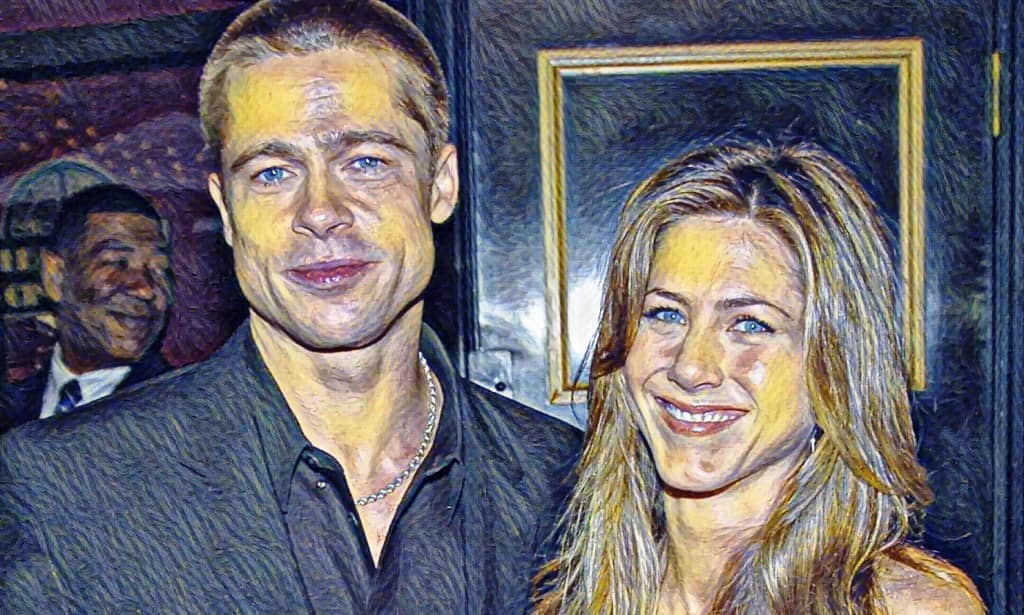
Along comes Jennifer Aniston, and, oh boy, we’re in the middle of some prime-time love here. That wasn’t dating — this was an investment for the country. America wasn’t just hoping they would last; we required them to last. Their 2000 wedding was the celebrity wedding version of the Super Bowl. One million-dollar budget? For one day? I spend less on my vehicle, and that thing better last me at least five years! And Brad and Jen? Five years was clearly the warranty period on this fairytale.
When they said in 2005 that they were getting a divorce, it was like learning that Santa was subcontracting the whole delivery thing to Amazon. What a buzzkill. “Irreconcilable differences”—what a cop-out is that? He squeezes the toothpaste in the middle? She wants it said “gif” instead of “gif”? Announce something with some substance here!
And wait, there’s more! When the divorce paperwork is scarcely wet with ink, there are scenes of Brad cavorting on the Kenyan beach with Angelina Jolie and her child, playing! In Kenya! When he’s in the process of getting divorced! How it happened was so tidy, you’d have suspected it was a conspiracy by the same team that wrote the script to the film “Mr. & Mrs. Smith.” Oh wait, that’s where they met, huh? How nice is that? It’s like you order pizza and the delivery man just so happens to be your long-lost lover. What are the odds?
Thus, was created “Brangelina”—because what better definition of the power of true love than a portmanteau that sounds like a prescription medication? “Side effects may include the adopting of children from several continents and making your family a rolling United Nations summit.” They accumulated children the way that others accrue airline frequent flyer miles, circling the globe on an entourage that had its own postal district for more than a decade.
Seven years prior to them being able to become engaged? Seven! I’ve seen other people making faster choices on cableproviders. They, however, did wed in the French château in 2014, because, apparently, regular venues would not provide good photos for the upcoming divorce asset wars.
And it’s-a us with divorce—2016 rolls around, and voila! “Irreconcilable differences” once more. Only this time with special flourishes: custody battles, courtroom battles over the vineyard, and accusations flying around like confetti at the very expensive, very messy New Year’s bash. They can’t even so much as decide to break up a vineyard. A vineyard! Most divorced couples bicker over best china; they’re battling over physical, flesh-and-blood pieces of property that just so happen to produce alcohol. How very Tinseltown.
Now in 2022, Brad’s girlfriend is Ines de Ramon, a jewelry executive. You have to give him credit for consistency nowadays. Successful? Check. Good-looking? Check. Somehow connected with the entertainment industry? Check. He’s like he has a type, and that type is “will photograph well in paparazzi shots and has an interesting career to talk about during cocktail party conversation.”
So how’s his love life? He’s playing the game of musical chairs in romance, yet the music never ends, there are always photogs, and the chairs are worth millions of dollars. And in the fantasy-paying-for-the-rent type of a city, can’t reality have as much fun?
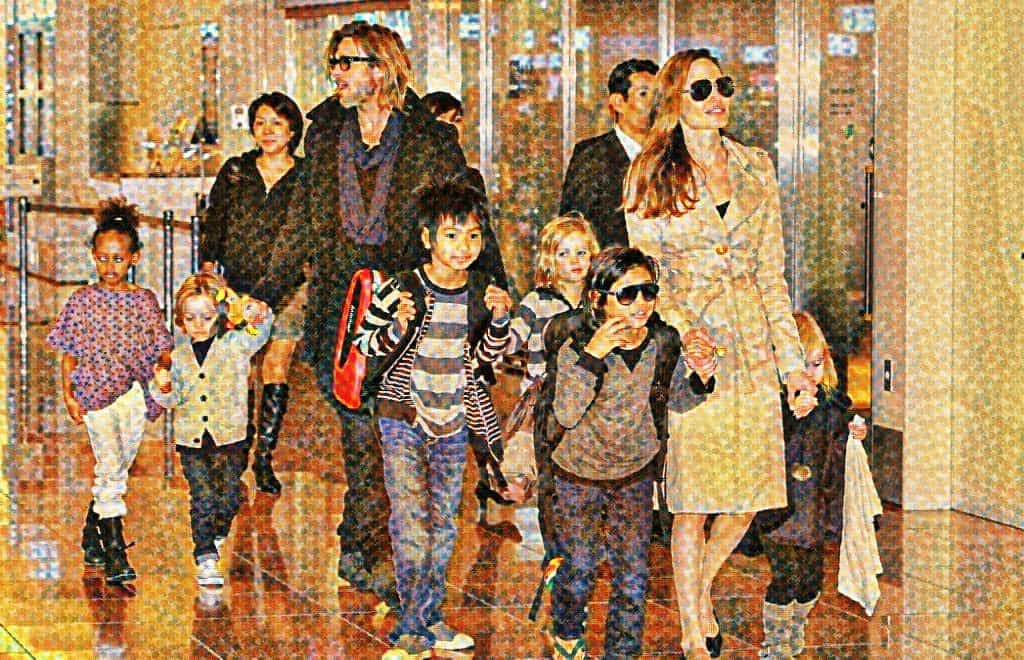
From Jolie-Pitt to Just Jolie: When Kids Choose Sides in Divorce
Then let me understand this correctly — we inhabit the world where baby pictures can purchase a home, and we must blind ourselves to the fact of its existence? The Brangelina saga is no Hollywood tabloid rumor but an ongoing real-life sociology experiment in front of our eyes, only the subjects in this case just happen to be among the most photographed kids in the world.
Just imagine this: it’s 2005 and Brad Pitt’s approach to getting close and personal with his new girlfriend is to take a trip to Ethiopia and bring home a child. Couples argue over whose turn it is to put in the dishes, but these two? They’re off rescuing kids from other continents like they’re checking off an international scavenger hunt list. “Honey, we’ve done Asia and Africa, but have you considered South America?” It’s as if they put becoming parents on the United Nations to-do list.
And could we just take one minute to discuss the price? Forty-one million dollars for baby vaccinations. Forty-one million! I have witnessed haggling over a five-dollar garage sale lamp, but the world in general decided that photos of a baby were more budgetarily significant than the GDP of some smaller countries. What the heck were we purchasing here? The privilege of seeing the face of a celebrity baby? Spoiler alert: it’s a baby!
And that’s where I find it interesting — interesting, of course, in the laughably ridiculous sense of the word. They created a wax replica of two-month-old Shiloh. A wax replica of a baby. Who signed off on this? What team of people sat around the conference table and thought, “You know what the world needs? A non-breathing, non-moving infant replica”? And more to the point, what sort of person goes to Madame Tussauds to look at the wax baby? “Excuse me, where’s the world-famous baby exhibit”?
Fast forward all those adopted papers, journeys outside the country, and as much red tape as to fill a courthouse, and what have we got? A custody battle the Cold War would be jealous of. Five years of litigation! I have witnessed houses sold sooner than these two could make a schedule of visits. And the whole ordeal with their children growing up to witness their parents’ relationship torn to bits in tabloids like a high school biology lab experiment.
And the kicker here — just enjoy the timing of these children, by the way — Shiloh comes of age and, like, as soon as humanly possible, sheds the “Pitt” prefix in front of her moniker before you could drop the hot mic on a tanking comedy club set. She’s been waiting all these years for this. “Lord have mercy! Technically an adult! Now I’m gonna truncate my name like I’m trimming my social media profile.”
And obviously, she paved the way, because Vivienne and Zahara followed in her footsteps. It’s dominoes, but instead of using dominoes, you can use years of family therapy payments. You can just envision the family reunion awkwardness: “Pass the potatoes, and hey, by the way, my new name is.”
It’s the level of precision that blows my mind. These kids didn’t just revolt in this latchkey kind of manner by getting a tat or getting laid by someone their parents wouldn’t approve of — no, they skipped right past the courts. They went, “You know what? I’m going to make this official. With paperwork. And court records.” It’s the most civil form of teenage rebellion I have ever seen.
Consider the Brad Pitt scenario just for a moment here. You wait years to adopt kids, assemble a global family, get your picture taken by the millions of your fans, your kids grow up, they allegedly escort you off the island by changing their last names to yours. Your family fires you, essentially. “Thanks for the childhood, Pop, but we’re going in a different direction. We’ll keep your number on file.”
The whole exercise makes you ask: when your baby photos are more valuable than the average person’s pension, when your toddler’s been waxed, when your relatives fight on international news reports — how typical is a typical childhood? These children couldn’t go to the playground anymore without the paparazzi turning it into a red carpet premiere.
And look at us today, observing this generation next of this family basically re-making family history. They had to go back and review their childhood, balance the pros against the cons of attachment with each mother and each father, and voted quicker than a corporate boardroom. Not drama, no headlines — but quiet legal modifications of name that shout louder than any interview can ever pretend to.

The Truth About Brad Pitt: Addiction, Allegations, and Hollywood’s Amnesia
So what’s interesting about Brad Pitt? I mean, you have a gentleman who is the recipient of a federal investigation and it’s a career highlight. Somebody comes to interview him about his paternal abilities – the FBI! – and this is the origin of his redemptive arc? He’s audited by the IRS and writes an article on individual budgeting.
Imagine this: September 2016, approximately 30,000 feet up. Brad Pitt’s in the midst of what you’d graciously refer to as a “difficult discussion” with the family aboard a charter plane. And as the rest of us have family disputes on a plane, we’re rewarded with scowls from strangers and a potential passive-aggressive remark from the flight attendant. When Brad Pitt’s having a family dispute aboard a plane, the federal officials are writing down notes. Because, of course, once you’re famous enough, even your most mortifying moment of parenting is being monitored by the government.
And just for kicks, of course – the Los Angeles Department of Children and Family Services can’t just sit back and relax while the rest of us want in on this investigation action, either. It’s like celebrity intervention picnic or something, right? “Hey, the FBI’s already grilling us, so let’s have a whole investigation!” You know, like your neighbor complains that the stereo’s playing too loudly, and the whole homeowners association comes with clipboards.
Flash-forward to 2022, and we’re watching a daytime soap that subtlety can’t even get close to. Angelina Jolie’s attorneys are testifying that sound like a rejected “Days of Our Lives” script, complete with physical fights and nefarious nondisclosure agreements thrown into the mix. I’m wading through these court papers and saying to myself, “This is what happens when two gorgeous people try to break up a vineyard.” Most exes battle over who gets the nice dishes. These two are battling over a genuine French château. It feels like we’re witnessing billionaires battle over dividing their country collection.
And the critics – the critics! Those such as Angelica Jade Bastien are, like, “Are we seriously going to act like that never transpired because the new film of his kicks so hard?” And that’s just what we do, don’t we? We have the attention span of espresso-fueled goldfish regarding the scandals of Tinseltown. One solid performance, a handful of genuine interviews, and all of a sudden we’re all, “Brad who? Oh, that smooth dude in the racing car film!”
And that’s where the fascinating part is. While the FBI is interfering with his personal life during the same month, Pitt becomes sober and begins going to Alcoholics Anonymous meetings. That’s multitasking, folks – federal investigation AND rehabilitation, all at once. It’s like having your tax return done and having a root canal, both in one time-span. Any other guy would have cracked under the pressure of all that, but this guy makes it a brand, like his clothing line.
And with whom does he take this ride? Bradley Cooper. Why? Because in Hollywood, even your recovery buddy needs to be really handsome and Oscar-nominated. Normal people have sponsor types like Frank at the post office. Brad Pitt has Bradley Cooper. It’s like having a life coach and a biopic player all in one.
By 2019, Pitt is writing stories for Interview magazine, in-depth interviews with Anthony Hopkins about addiction. Two handsome, wealthy, Oscar-winning stars talking about their drinking issues. Eavesdropping on the world’s most expensive therapy session reading that interview. I’m thinking, “Even their rock bottom is better than my good days.”
And take a trip back to the late ’90s, when our golden boy was grappling with his fame by, according to his own description, “smoking way too much dope” and “sitting on the couch and just becoming a doughnut.” A doughnut! The man women all around the world fantasize about is likening himself to a doughnut. That’s like Michelangelo calling the Sistine Chapel “just some ceiling work I did.”
Turning point occurs while he travels to Morocco, in that exposure to true poverty brings one back to reality to him. You need to get on a plane halfway around the globe to find out rich, famous, and wasted on a couch in Malibu isn’t really that great of a life plan after all. It’s the world’s most pricey alarm call.
It’s celebrity rehab math that gets into my mind here: Law trouble and addiction and tabloid scandal and back again equal rebuilt respect and box office riches? It’s this bizarre math problem of the Hollywood kind whereby the negatives become positives after you’ve ingested “good acting” and “real interviews.”
So my question is: Is this real change, or very costly public relations? And in all honesty, does it matter as long as the movies are great and the_recovery story makes us feel better? In all honesty, because in the real world we’re just there sitting back, watching pretty people work out their issues in the public eye, and we can’t even get our families to call us back.
Face Blindess
Imagine, you’re one of the world’s most famous faces, in the mags’ covers and the red carpets of the world, but you can’t identify a face at Hollywood parties. It’s the world of Brad Pitt, a peculiar one where the script is penned in irony.
In 2022, Pitt explained his lifelong battle against prosopagnosia—or, in my amateur estimation, “face blindness,” nature’s cruel joke on the man with a career of being impossible to forget. Unofficially never diagnosed (because, of course, even such confirmations of a doctor need to audition in Hollywood), the condition turned his social life into a spin cycle of terror.
By 2013, it’d become so ridiculously complicated that Pitt’d admitted that his face-blindness had become so severe that he’d just end up staying home so he wouldn’t have to face the social minefield of misidentifications and cringe moments. Know? The face that probably inspired a thousand film posters, practically a prisoner in his own mansion because everybody else’s face was more or less a Rorschach test. It’s like being a culinary wizard that can no longer taste—functionally disabling and cosmically hilarious all at the same time.
Public Persona
So Brad Pitt—what is this guy all about? I mean, there’s a guy who’s actually built most of his living being phenomenally attractive having a chomp in his pie hole in a movie. And all of us just sit back and just accept this as a legitimate career trajectory? What is it about seeing pretty faces chomp down that makes us think, “Yes, this guy should definitely save the world”?
Let’s take a look at the evidence, shall we? Empire magazine in 1995 places him on their “25 Sexiest Stars” list. Well, and then People magazine crowns him “Sexiest Man Alive.” Twice! Because, I suppose, sexy for one year just wasn’t enough for Brad. It’s like he cornered the market on sexy and then said, “You know what? I’m going to take out a two-year lease on this being sexy thing.”
Then, naturally, things become a bit interesting—and, in my own personal case, ridiculous. This guy concludes it’s a side business to be ridiculously good-looking. Casual world domination is his game, though. Forbes places him in the Celebrity 100 for consecutive years at 20th, then 5th, then 10th. Even his power rankings are soap opera plot twists! Most individuals can’t even recall their coffee order, but Brad’s out here yo-yo-ing the Forbes list like it’s a game for him to play.
Then Time magazine puts him on the list of the world’s most influential people. Why? Because he can simply point at things and get the whole world to turn its head. That’s his superpower—celebrity pointing. “Hey everybody, look over there!” And billions of people turn their head like a synchronized swimming school. Brad Pitt isn’t famous any more; he’s actually running a world-wide service pointing people’s attention.
Speaking of international business, his films have together grossed $6.9 billion globally. Billion! With a B! That’s GDP-level money—not box office money. Brad Pitt has effectively begun his own economy. Other nations likely trade Brad Pitt futures.
Let’s talk about “Brangelina”—because nothing is more classically top-celebrity news reporting than taking two famous people’s names, mashing them together, and passing the product off as a piece of reportage. When Angelina got pregnant in 2006, Reuters—Reuters, folks!—called the interest “reaching the point of insanity.” Even the news channels broke out the white flags and declared, “Folks, we’ve lost our mind collectively over two attractive people having babies.”
Their flight from paparazzi? Fly to Namibia. One blog called their baby “the most anticipated since Jesus Christ.” Sorry, what? We’re comparing celebrity children to religious figures now? Next thing you know, we’ll be declaring Brad’s breakfast choices as the new Ten Commandments.
Two years prior, when Jolie told the press she had a bun in the oven, reporters literally camped outside a Paris hospital for fourteen days. Fourteen days! Standing in line for concert tickets, waiting for. a baby to be born. It’s incredible and deeply creepy all at once.
And my all-time favorite Brad Pitt accomplishment ever? In 2015, they dedicated a minor planet in his name. Planet Bradpitt just hangs out in space today. The man is a past heartthrob and now he’s got real estate in the solar system. What’s the next thing? You think he’s considered a constellation? Perhaps a galaxy in his mane’s name?
What is the saga behind the odd record of Brad Pitt from chiseled face to international namesake? In an industry where stardom has a sell-by date quicker than dairy, he’s been categorized under breaking news for more than four decades. Maybe the enigma is not his success, but our failure, en masse, in becoming accustomed to enjoying seeing him look fabulous doing mundane things. That, my friends, is stardom.


